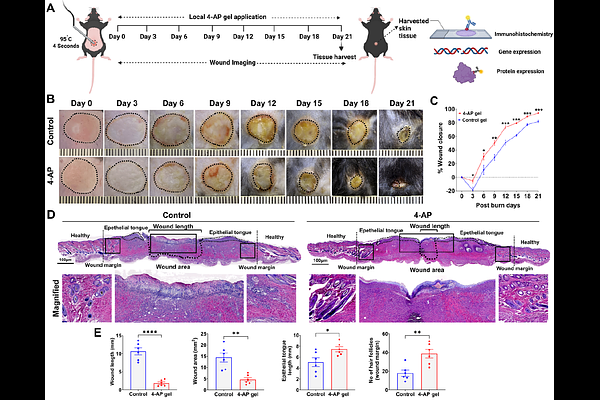Topical Delivery of 4-Aminopyridine Enhances Skin Regeneration in Burn Wounds

Topical Delivery of 4-Aminopyridine Enhances Skin Regeneration in Burn Wounds
Ellur, G.; Kamaraj, M.; Elfar, J.; Govindappa, P. K.; John, J. V.
AbstractBurn wounds are a common traumatic injury that impair cellular function and hinder the healing process, often resulting in significant skin loss. While autologous skin grafting is considered the gold standard for treating burns, its widespread use is limited due to donor site morbidity and the requirement for large amounts of tissue. Traditional wound dressings and treatments often fail to ensure complete recovery. Being initially FDA-approved to treat multiple sclerosis, 4-aminopyridine (4-AP) has also been shown to accelerate burn wound closure by transforming keratinocytes and fibroblasts when administered systemically. However, prolonged systemic use of 4-AP can lead to significant side effects. In this study, we aimed to repurpose 4-AP for treating skin burn wounds by delivering it topically using a laponite-gelatin gel formulation. This method allows for non-invasive and localized drug delivery on burn wound site. We evaluated the physical properties of the 4-AP gel shear thinning behavior, drug release kinetics, biocompatibility, and functional wound closure using a scratch assay. Moreover, our in vivo experiments showed that the 4-AP loaded gel accelerates wound healing by enhancing re-epithelialization and hair follicle regeneration and promoting fibroblast to myofibroblast transformation, which supports extracellular matrix remodeling after skin burns. This novel application of the 4-AP gel could offer a promising alternative to current burn wound therapies, potentially leading to improved outcomes for burn patients.